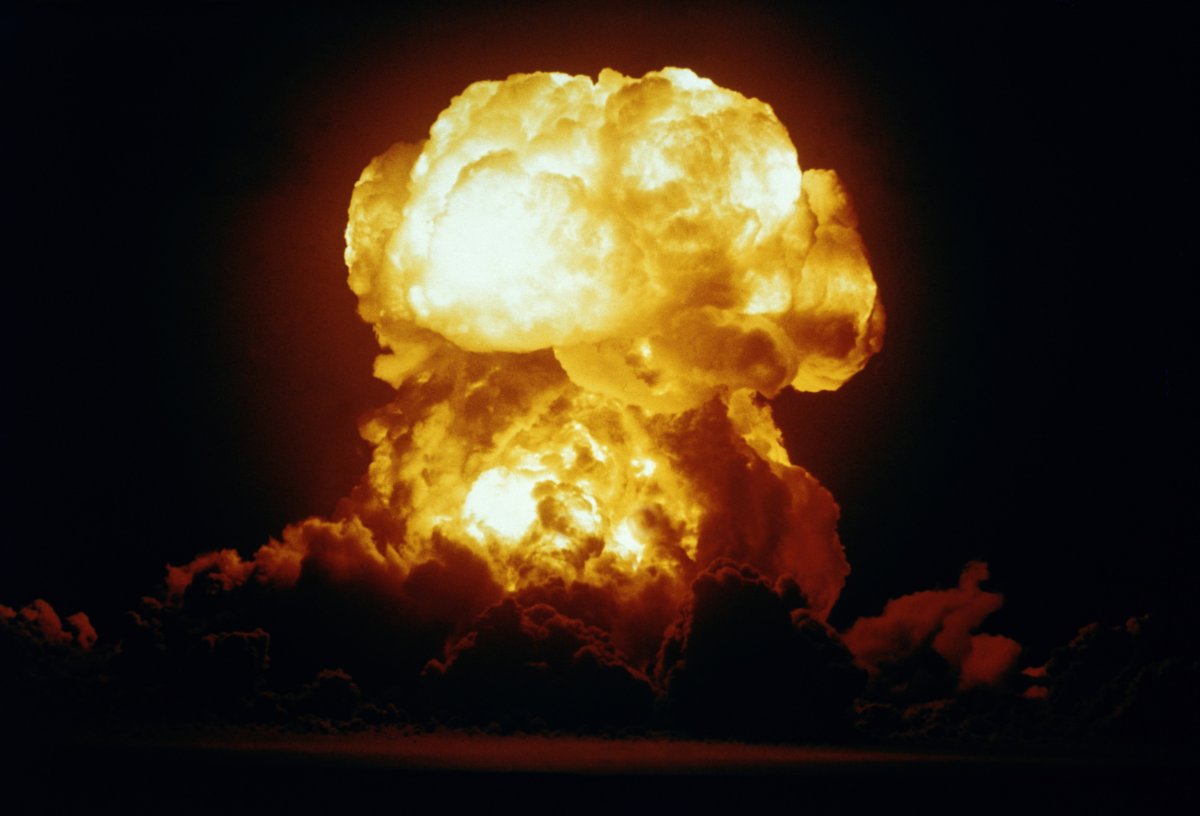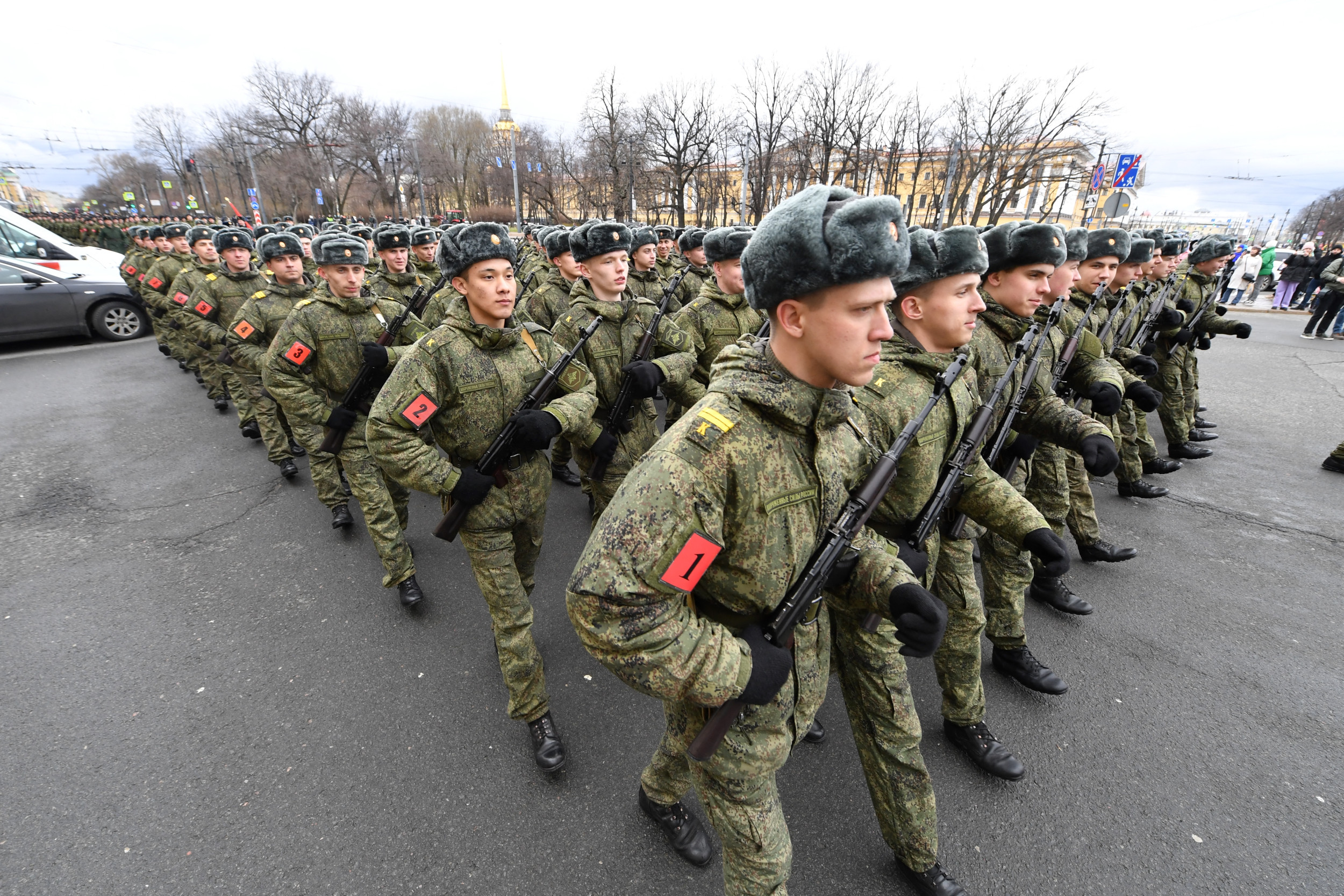The creator of a nuclear war simulator has said it is "critical" that the public understands the nature of the threat posed by atomic weapons.
Tensions between the West and Russia rose significantly after President Vladimir Putin launched his invasion of Ukraine in February and worsened as the West began supplying Ukrainian forces with urgently needed military aid. While it is not clear if Russian President Vladimir Putin would go so far as to use nuclear weapons, despite his recent threats about deploying them, the escalation of the Ukraine conflict has led to increased discussions about the potential outbreak of a nuclear war.
Christopher Minson, a computer scientist who has created a tool to simulate the impact of a nuclear weapon attack on the United States, told Newsweek the war in Ukraine has generated a "massive increase in traffic" to his site.
"In fact, the site has become a bit of a proxy measure for international tensions," Minson said. "Whenever I see a big uptick in usage, I know that something has happened to make the world more nervous. Conversely, when traffic calms down, I know that we're in a relatively peaceful period with no news."
Minson said he created to tool as a public service to educate people about the catastrophic consequences of nuclear war. Today, there are an estimated 13,000 nuclear weapons, according to the Stockholm International Peace Research Institute, around 90 percent of which are in the hands of Russia or the United States.
After the Cold War, "nuclear weapons never went away and instead have continued their spread across the globe," Minson said. "The risk of them being used increases every year as arsenals expand and our world becomes increasingly unstable."
He continued: "It is critical that the public understands this threat. They need to see, clearly and viscerally, just how universal and destructive a nuclear war would be. A scientifically based nuclear simulation is one way to do that."
On Minson's website, there is a tool that simulates a large-scale nuclear attack on the United States. This simulator shows what would happen if approximately 1,200 warheads—around 7 percent of the world's stockpile—struck the United States.
Minson said this is a realistic scenario based on scientific data and known targeting strategies, although in real life an attack could take many different forms.
With the map tool, users can watch as the two-hour attack plays out, with nuclear warheads striking numerous government and military targets as well as population centers. One second in the simulator is equivalent to one minute in real life.

In creating the simulator, Minson used a database of U.S. targets derived from declassified information, as well as a database of warhead yields. He then put together a separate database of census data, mapping the population to target sites.
"[The] web-based simulator takes all this information and correlates it," Minson said. "It then executes a simulated two-hour strategic attack. During that time, the simulation runs through the target list and launches the appropriate strikes against them. Concurrent with that, it estimates casualties from the known impact of these weapons and the size of the population."
The simulator shows the effects of nuclear blasts on the ground, based on well-known physics. It also models the spread of nuclear fallout—the residual radioactive material propelled into the upper atmosphere following a nuclear blast. However, Minson said these calculations are trickier and subject to countless variables, including soil geology and urbanization level, warhead size, detonation altitude, season and local weather and wind speeds.
"There's also the question of interactions when multiple warheads strike the same target," Minson said. "It's a complicated problem. Fortunately, all of this has been well studied by the U.S. military."
He continued: "As a result, simplified equations are available that approximate fallout under most conditions. These are known as Carl Miller's Simplified Fallout Scaling System and are the basis for my fallout maps."
Minson said it was important to note that the scenario shown in the simulator is only an approximation of what could happen during a nuclear attack on the United States.
"An attack could take many forms and would be affected by countless variables," he said. "This simulation presents just one conservative middle-of-the-road scenario among many."
On the website, Minson has also included a second tool to map the effects of a single nuclear bomb on an individual target in the United States.
Other simulators and tools that model the impact of a nuclear blast or full-blown nuclear war include NUKEMAP, which was created by Alex Wellerstein, a historian of nuclear weapons and an associate professor at the Stevens Institute of Technology in Hoboken, New Jersey. There is also the "Plan A" four-minute audiovisual piece, developed by researchers associated with Princeton University's Program on Science and Global Security.
Uncommon Knowledge
Newsweek is committed to challenging conventional wisdom and finding connections in the search for common ground.
Newsweek is committed to challenging conventional wisdom and finding connections in the search for common ground.
About the writer
Aristos is a Newsweek science reporter with the London, U.K., bureau. He reports on science and health topics, including; animal, ... Read more
To read how Newsweek uses AI as a newsroom tool, Click here.








